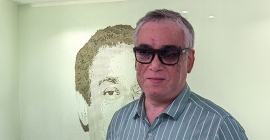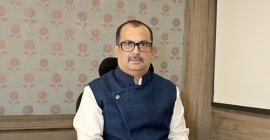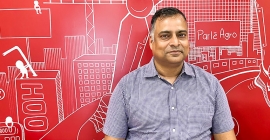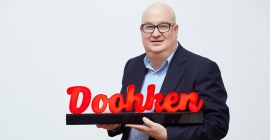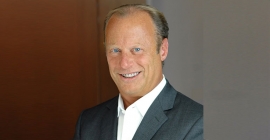‘Invest in modernising business processes’
By Rajiv Raghunath - August 14, 2019
Barry Cupples, Global CEO, Talon underlines the importance of data-driven campaign planning and evidence-based measurement of the medium
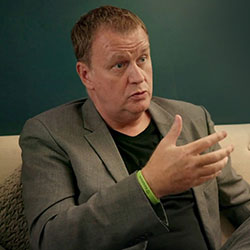 Globally, OOH accounts for an average 6%-7% of the total ad spends, whereas it has been said in different quarters that the share could easily double in the coming years. What steps will help OOH double its share of spends?
Globally, OOH accounts for an average 6%-7% of the total ad spends, whereas it has been said in different quarters that the share could easily double in the coming years. What steps will help OOH double its share of spends?
We also see potential for OOH to significantly increase its share of ad spend. But to do so, the channel and the industry at large must do more to prove its value and effectiveness to advertisers, and make it easier for them to access and navigate the market. A crucial first step towards achieving these growth goals is investment in modernising business processes and standardising inventory and trading. There has been huge investment in the rollout of digital screens, but nowhere near enough in the digitisation and transformation of the systems and processes that support them. Consequently, many manual, offline steps persist in the campaign trading and activation process which creates some challenges for advertisers who want to engage with the medium. As well as speed of activation, solving business process and trading automation is an enabler for smarter and more effective advertising - which is the part our customers really care about.
We’re already seeing a more effective OOH medium in the digital age (twice as much according to UK IPA econometrics figures) but we are focused on providing better evidence-based metrics (including footfall) using location data that is helping us redefine how we measure and plan OOH. It is for precisely these reasons that Talon has developed and launched a set of proprietary technology platforms; Plato and Ada. They are audience targeting and automated trading solutions specifically designed for OOH, which simplify a fragmented and complex medium and answer advertisers’ demands for more data-driven campaign planning and evidence-based measurement.
Plato and Ada are a key part of Talon’s global strategy, because they create more value for our customers and we believe that is the key to unlocking ad spend growth.
Do you see digital OOH driving the OOH growth, and what would be the way forward for static, classic media in today’s tech-driven, hyper-connected world?
Advertisers are shifting their OOH ad spend from classic billboards to digital Out of Home inventory. This year adspend on digital OOH will grow by 10%, more than twice the rate of global adspend growth overall. So it’s clear that digital OOH is the primary driver of growth for the medium from an inventory perspective. I fully expect this trend to continue because media owners are accelerating their investments in digital screens and advertisers are increasingly capitalising on the opportunities they provide for more data-driven targeting and dynamic creative. And by doing so, they’re achieving better returns on their Out of Home investments than ever before.
OOH’s core strength, however, remains its ability to reach large audiences, quickly, with unobtrusive and unmissable brand advertising messages. Classic OOH media plays a vital role in doing this effectively, at scale and we continue to see that the most effective campaigns use a blend of digital and classic placements.
Are you seeing a new class of advertisers entering the OOH fray as OOH leverages data and technology in more meaningful ways?
Yes, to a degree. The best example of this is the way that Big Tech, the likes of Google, Facebook, Amazon, Netflix, are now amongst the biggest users of OOH advertising globally. These businesses prioritise OOH because it is one of the few opportunities they have to create a real, physical manifestation of their brands and products and to connect with audiences they really value in meaningful ways.
After Big Tech, I believe the next new class of advertisers to embrace OOH will be performance-driven, traditionally digital-first. There’s ever more evidence that OOH can have an important impact on people’s decision-making as, consequently, their offline and online behaviours. This impact has been somewhat obscured by last-click attribution and econometrics methodologies, but that will change as advertisers move away from rigid, one-size-fits-all measurement approaches.
Performance-driven advertisers are beginning to recognise how OOH can help them acquire new customers and over time this will create an ever more compelling body of evidence for OOH effectiveness. Talon’s audience targeting platform, Ada, has been designed to answer the needs of this new class of advertiser. Ada enables them to apply the digital advertising techniques they use online, but in an offline media channel. These advertisers can use Ada to plug in their 1st party data or create custom audience segments, optimise their OOH media buys to efficiently reach them, and then connect data and intelligence about OOH exposed audiences to the platforms and providers that help them quantify real business outcomes.
What is your view on programmatic OOH -- is this revolutionising OOH business?
Programmatic OOH is slowly beginning to emerge but, in my view, the shape of the current proposition and the way it is being over-sold is holding back the development of the market. Online DSPs’ share of programmatic ad spend is forecasted to decline once again in 2019 whilst the walled gardens – Google, Facebook, Amazon – will capture an even larger share of advertisers’ digital dollars.
As they struggle to reverse declining revenues in their traditional space, DSPs see digital OOH as a new growth market. The challenge they face is that by trying to retrofit Digital OOH into an online trading model, they’re failing create a genuine value proposition for advertisers. The online model simply doesn’t work for OOH as a one-to-many medium where real-time trading, despite what some may have you believe, simply isn’t possible at any meaningful scale.
So far, advertisers do not appear to be convinced and there has been no significant uptake. There is no doubt that the future of OOH will eventually look a lot more like programmatic online. Inventory will be aggregated and accessible to more media buyers. Trading will be accelerated by automation and interoperable planning and buying technologies. New forms of audience and location data will enable advanced targeting and attribution. But the industry needs to focus on the present, invest in the right capabilities now to create a future where a genuinely programmatic OOH market exists and ensure it is one that serves the interests of advertisers and not only the businesses who operate in the industry.
For more updates, subscribe to media4growth newsletter - Click here

Stay on top of OOH media trends

